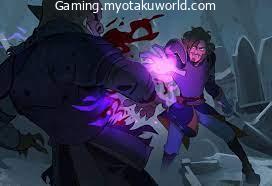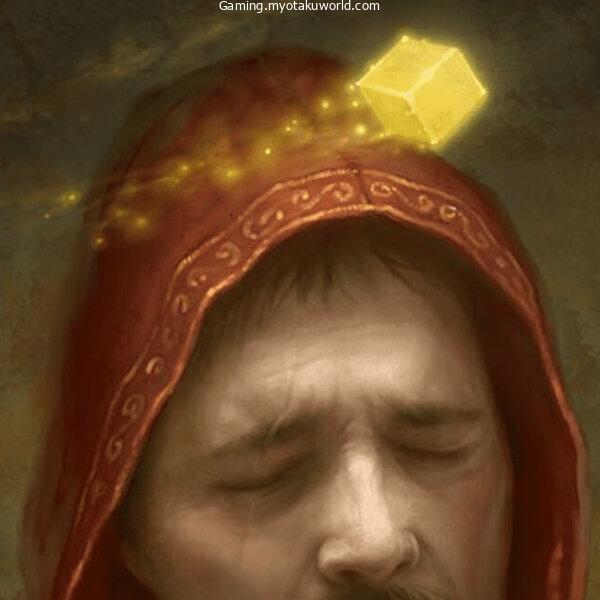Healers are an important part of any journey. You can’t risk going into battle if you don’t have a way to quickly get your health back.
The healer in Goblin Slayer is just one example. In One Piece, Chopper is a healer because he is a doctor who takes care of the crew’s wounds. There are a few classes in Log Horizon that help people get better.
Also, there are doctors in video games. Most of them come from online games or role-playing games with a lot of characters, like Valorant or Divinity: Original Sin 2.
There are different spells and ways to heal your friends in these games, just as there are in D&D. The Aura of Vitality, a level 3 evocation spell, is a pretty good healing spell. However, it has its ups and downs.
The biggest problem with this spell is that it can only be cast by one class. However, Tasha’s Cauldron of Everything makes it possible for many more classes to learn the Aura of Vitality magic through the Additional Spells class feature.
This 5e guide to Aura of Vitality will tell you who can cast it, how to cast it, and a lot more. Read this guide to find out if the good things about the spell are more important than the bad things.
- Bottom Line Up Front: What is Aura of Vitality in D&D 5e?
- How to Use Aura of Vitality in D&D 5e
- How Does Aura of Vitality Work in D&D 5e?
- Example Scenario for Using Aura of Vitality in D&D 5e
- First Scenario: Casting Aura of Vitality Using a Level Three Spell Slot
- Second Scenario: Healing a Bandit Using Aura of Vitality
- Third Scenario: Healing a Bandit but Going Over Maximum HP
- Fourth Scenario: Casting Aura of Vitality Using a Level Five Spell Slot
- Fifth Scenario: Losing Concentration on Aura of Vitality
- Who Can Cast Aura of Vitality in D&D 5e?
- Classes that Can Cast Aura of Vitality in D&D 5e
- Subclasses that Can Cast Aura of Vitality in D&D 5e
- Races that Can Cast Aura of Vitality in D&D 5e
- Creative and Useful Ways to Use Aura of Vitality in D&D 5e
- Restoring HP without Resting Using Aura of Vitality in D&D 5e
- WHO CAN I TARGET WITH AURA OF VITALITY 5E?
- Healing Undead or Constructs Using Aura of Vitality in D&D 5e
- FAQs
Bottom Line Up Front: What is Aura of Vitality in D&D 5e?
Ah, the Aura of Vitality. That was the spell that everyone thought Clerics would be too weak to use. The fear was unfounded, because most modern Dungeons and Dragons players don’t think Aura of Vitality is too strong for the amount of resources it costs.
Still, Aura of Vitality is a very appealing spell because it can be used to heal over and over in battle or to give 70 average hit points to everyone in a party when there is a 1-minute break in the action. Let’s talk about how it works and the best way to use it.
How to Use Aura of Vitality in D&D 5e

Aura of Vitality, like all spells, has standard requirements that you should always consider: the components, range, casting time, and spell slot. They are as follows:
- You must know the Aura of Vitality spell or have it prepared. Most spellcasters know their spells by heart (like Bards and Sorcerers), but some have them in their memories (like Clerics and Wizards) or prepare them ahead of time. Some class traits or items, though, can let you cast a spell without knowing or preparing it.
- You must have at least a level three spell slot. Aura of Vitality is a level 3 spell, so to cast it, you need at least one open level 3 spell space. The results of Aura of Vitality do not change if you use a spell slot of a higher level.
- You must use your action to cast the Aura of Vitality spell in combat. Outside of combat, an action is equivalent to six seconds.
- You must be able to talk to cast the Aura of Vitality spell. It needs the verbal component, i.e., you need to produce audible words.
- You need to concentrate on the Aura of Vitality spell. As I’ve talked about in my other guides, concentration magic like the Aura of Vitality need your full attention. You should read my Pass Without Trace 5e guide for a more in-depth description of how it works. But here are some things that will help you understand this mechanic better.
- Casting two concentration spells at once is impossible; you must dismiss one if you want to cast another.
- Receiving damage while concentrating on a spell will force you to make a Constitution saving throw; when you are successful, you retain the spell’s effects. Otherwise, the spell dismisses.
- Being incapacitated or killed automatically makes you lose concentration.
Upon meeting the Aura of Vitality spell’s requirements and casting it, a 30-foot radius healing aura radiates from you. This spell can last up to one minute, which is ten rounds in combat. You can do the step below for every round during battle while the spell lasts.
- Use your bonus action to heal anyone within a 30-foot radius of you. You can also heal yourself.
After choosing to heal someone by using a bonus action on your turn, they instantly recover a particular amount of HP. The next section details how the Aura of Vitality spell works.
How Does Aura of Vitality Work in D&D 5e?
The 30-foot radius healing aura reaches your target, reenergizing them with HP. The following effects immediately happen:
- Your target recovers 2d6 HP. Per the healing rules, you do not heal above your maximum HP. For example, you recover 10 HP from Aura of Vitality, but your current HP is 25, and your maximum HP is 30. In this scenario, you only recover five HP to reach 30.
To sum up, when you cast this spell, you can heal one person with your extra action on each of your turns while Aura of Vitality lasts. The most time it can last is one minute, which in battle is ten rounds.
So, you could get 2d6 HP back ten times, either with the same person or with ten different people. In the next part, we’ll show you how Aura of Vitality works so you can get a better idea of what it does.
Example Scenario for Using Aura of Vitality in D&D 5e
Even though health is wealth, it can’t pay your taxes! Welcome to Arthur’s Lab, where we show you different spells to help you understand the theme better. This time, we’ll look at the level 3 summoning spell “Aura of Vitality.”
The experiment will be done on the islands, and Marshal will not be the one who casts the spell. Guardian the Dwarf Paladin, one of his friends, will do the job instead.
She can cast Aura of Vitality because she has the right number of spell options. She is also ready to cast the spell. A few thieves will be on the island with her, and she will heal them because they deserve to be taken care of now and then.
The picture below shows what the bandits around her look like and how much HP they have. They are fighting a wild wolf that got to the islands in some way.

Below is the turn order while in combat.
- Guardian
- Wolf
- Bandit 2
- Bandit 1
- Bandit 3
First Scenario: Casting Aura of Vitality Using a Level Three Spell Slot
Guardian goes first. She uses an open level-3 spell slot to cast the Aura of Vitality magic. She meets the spell’s standards because she can speak words that can be heard.
She concentrates on the spell, and a healing glow that goes 30 feet away from her bursts out from her. This picture shows how the Aura of Vitality gets to the other characters.

As you can see, Bandit 1, Bandit 2, and the wolf are all inside Guardian’s healing glow from glow of Vitality. So, she can use her extra action to heal one of these three creatures every turn. Since Bandit 3 is outside the area, Guardian can’t heal him.
Second Scenario: Healing a Bandit Using Aura of Vitality
Guardian used her action to cast Aura of Vitality on her turn, but she can still use her free action to heal other people on the same turn.
So, after casting the spell, she uses her extra action to heal Bandit 1, who has 19 HP, because he was hurt by the spell. Bandit 1 gets back 2d6 HP because he is in her aura. Guardian rolls the dice and gets 5 and 4, which adds up to 9. So, Bandit 1 gains back nine HP.
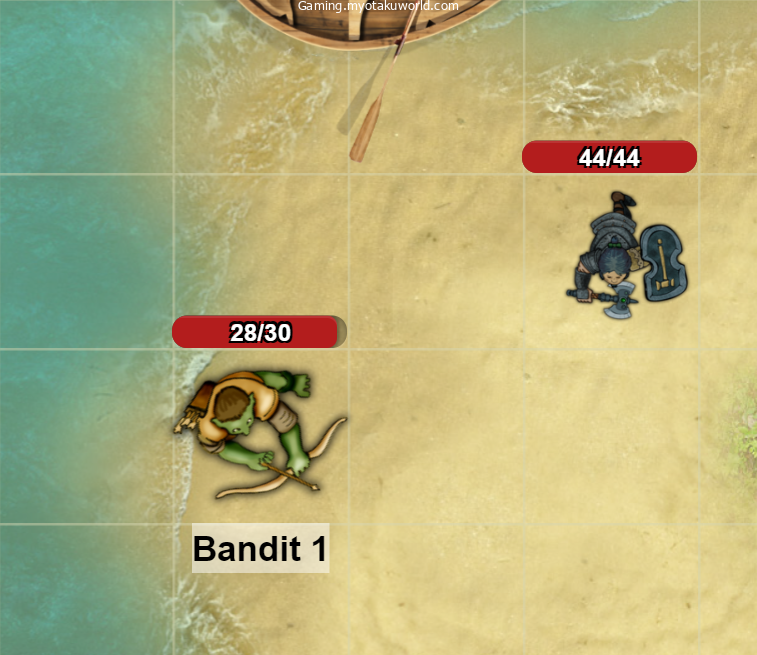
Third Scenario: Healing a Bandit but Going Over Maximum HP
It’s the wolf’s turn, and it bites Bandit 2 on the hand. The wolf was able to hit Bandit 2, and he lost five HP because of it. His current HP is therefore 25 out of 30.
Bandit 2’s turn has come, but he is in too much pain to move or do anything. The same thing is done by Bandits 1 and 3. Now it is Guardian’s turn again, and she is still focusing on the Aura of Vitality spell.
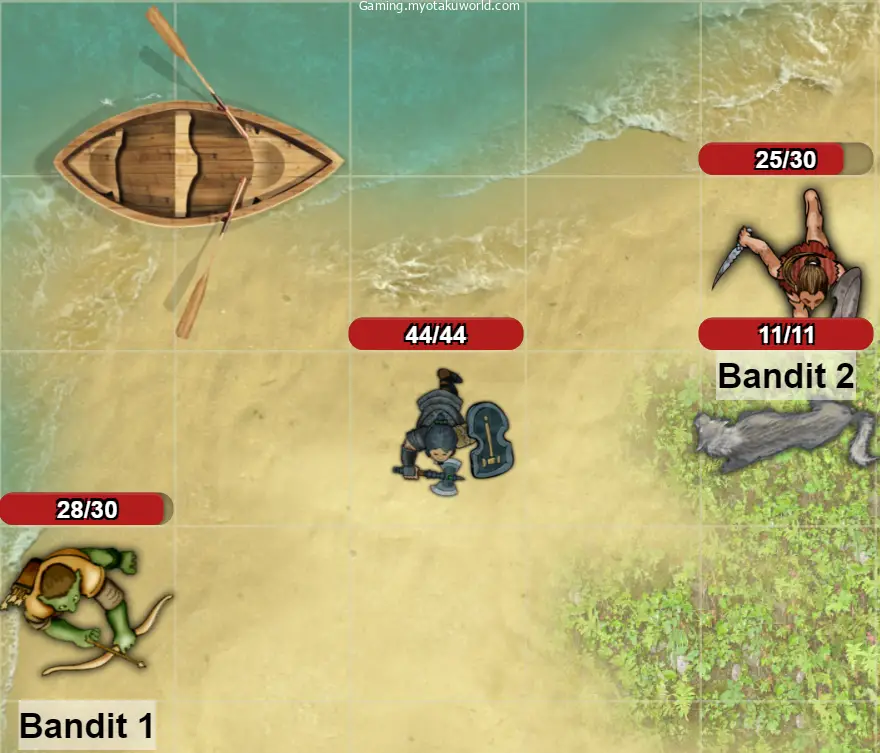
She uses her action to attack the dog with her weapon when it’s her turn. She hits the wolf, which means that, after adding the right factors, her attack roll equals the wolf’s armor class, and she does ten damage. Then, she uses her bonus action to use her Aura of Vitality to heal Bandit 2 with her bonus action. She rolls two six-sided dice and gets a total of seven, which is six and one.
Bandit 2 has 25 HP, and he can have up to 30. If he added seven more HP to what he already has, it wouldn’t make 32 because that would be more than his highest HP. Instead, it fills up, so he has 30 out of 30 HP.
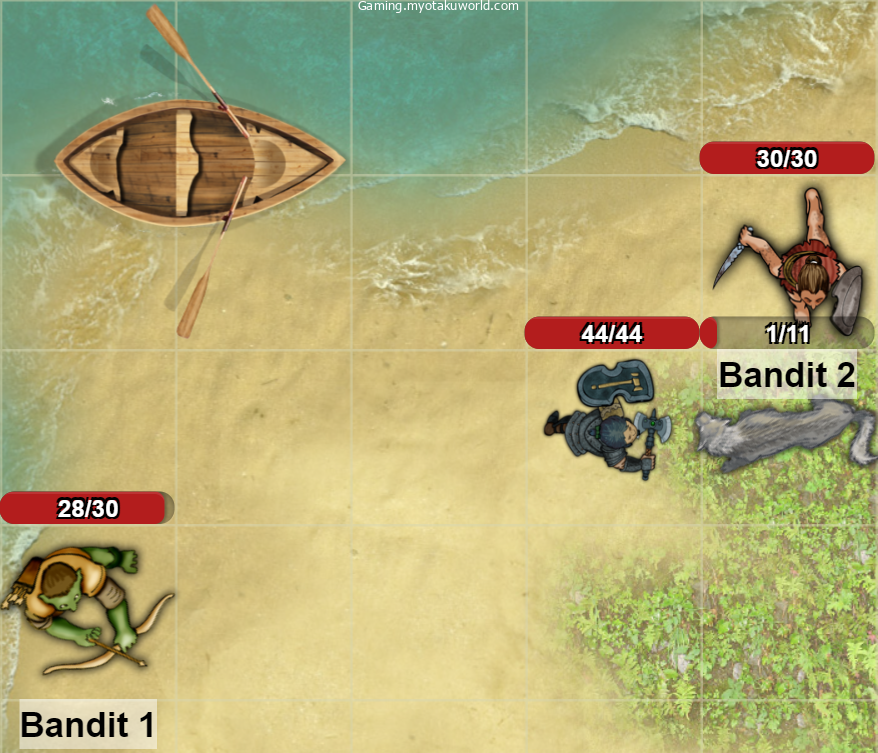
Fourth Scenario: Casting Aura of Vitality Using a Level Five Spell Slot
Bandit 1 is now the target of the wolf’s attack. It makes a hit and does six pierce damage to Bandit 1. We also told all of the bandits to stay still, but we did not scare them in any way to do so. It’s Guardian’s turn again, and this time she wants to use her action to cast the Aura of Vitality spell using a level 5 spell slot.
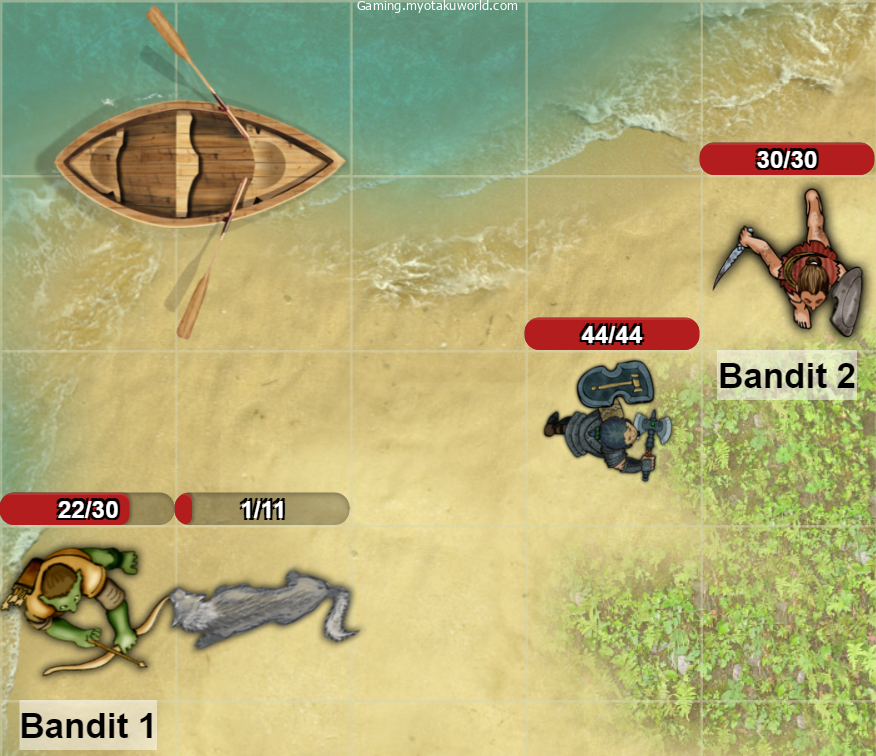
Fifth Scenario: Losing Concentration on Aura of Vitality
Now that it is the wolf’s turn, it attacks Guardian. The wolf gets a good bite on her and does four cutting damage. She is focusing on a spell, so she must make a Constitution saving throw to keep her mind on the spell. If she fails, the spell will stop.
Its Difficulty Class is either 10 or half the damage it took, whichever is higher. Guardian only took four damage from pierce, so the DC is ten.
So she rolls a 20-sided die and gets a 6. The bonus to her Constitution saving throw is +3. So, her last saving throw adds up to nine, which isn’t enough to hit the DC of ten. So, she can’t focus on casting the Aura of Vitality spell. If she wants to heal her allies during it, she must cast the spell again using a spell spot that is at least level three.
Who Can Cast Aura of Vitality in D&D 5e?
The Aura of Vitality skill is only available to one class, the Paladin, three subclasses (the Battle Smith Artificer, the Crown Paladin, and the Twilight Cleric), and one race, the Halfling with the Mark of Healing.
But with Tasha’s Cauldron of Everything, two more classes and one subclass can get the spell through their Additional Spells class feature: the Cleric, the Druid, and the Divine Soul Sorcerer.
Classes that Can Cast Aura of Vitality in D&D 5e
The Player’s Handbook says that the Aura of Vitality spell can only be used by a Paladin. When a Paladin gets to level 9, they get three level 3 spell slots. This means that they can cast this spell when they hit this level.
The spells in Tasha’s Cauldron of Everything are labeled as “Additional Spells,” which means that some classes can get them if they want to.
Aura of Vitality is a spell that the Cleric and the Druid can use. The sources for each class are listed in the table below, along with the source where you can learn more about its Additional Spell class feature.
| Classes that can cast Aura of Vitality | Class Source | Additional Spell Class Feature Source |
| Paladin | Player’s Handbook, page 82 | N/A |
| Cleric | Player’s Handbook, page 56 | Tasha’s Cauldron of Everything, page 30 |
| Druid | Player’s Handbook, page 64 | Tasha’s Cauldron of Everything, page 35 |
Subclasses that Can Cast Aura of Vitality in D&D 5e
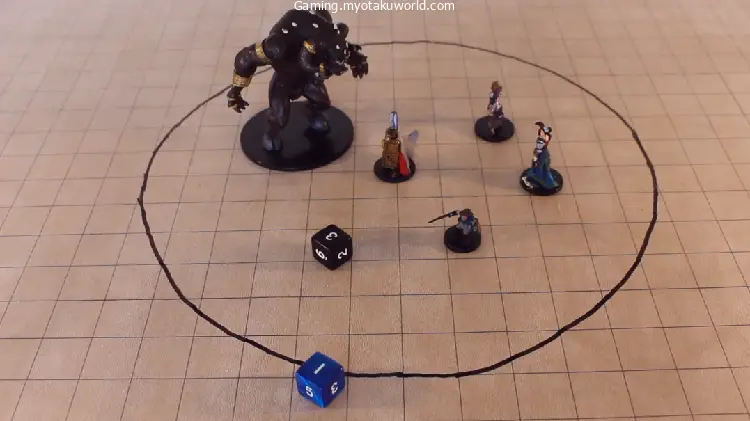
Initially, only three subclasses have access to the Aura of Vitality spell. However, thanks to Tasha’s Cauldron of Everything for adding the spell to the Cleric’s spell list, one more subclass can benefit from it. Below is a table with their essential details.
| Subclasses that can cast Aura of Vitality | Originating Class | Subclass Feature for Aura of Vitality | Subclass Source | Class Source |
| Battle Smith | Artificer | Battle Smith Spells | Tasha’s Cauldron of Everything, page 18 | Tasha’s Cauldron of Everything, page 9 |
| Divine Soul | Sorcerer | Divine Magic | Xanathar’s Guide to Everything, page 50 | Player’s Handbook, page 99 |
| Oath of the Crown | Paladin | Oath of the Crown Spells | Sword Coast Adventurer’s Guide, page 132 | Player’s Handbook, page 82 |
| Twilight Domain | Cleric | Twilight Domain Spells | Tasha’s Cauldron of Everything, page 34 | Player’s Handbook, page 56 |
When Battle Smith Artificers hit a certain level, their Battle Smith Spells subclass gives them a number of spells that are always ready. Also, these spells do not count toward the number of spells they have ready. When they hit level nine, they are always ready to cast the Aura of Vitality spell.
Most of the time, Divine Soul Sorcerers can’t use the Aura of Vitality spell. Tasha’s Cauldron of Everything, on the other hand, adds the power to the Cleric’s list of spells as a “Additional Spell.”
So, Divine Soul Sorcerers can get this spell through their Divine Magic subclass feature, which lets them learn or change a level 1 or higher spell from the Sorcerer spell list with one from the Cleric spell list. If you follow the rules of Tasha’s Cauldron of Everything, Divine Soul Sorcerers can use the spell Aura of Vitality.
Because of their Oath Spells and Domain Spells subclass features, Paladins who swear to the Oath of the Crown and Clerics in the Twilight Domain can always cast the Aura of Vitality magic. This is similar to how Battle Smith Artificers can always cast their spells.
In short, these subclass traits allow them to always be ready to cast a number of spells. Also, these spells do not count toward the number of spells they have ready.
Races that Can Cast Aura of Vitality in D&D 5e
The Aura of Vitality is a spell that halflings who have the Mark of Healing can use. They are part of the Eberron story, so it might not make sense to have a Halfling with the Mark of Healing in a game that isn’t set there.
So, first ask your DM if this race is allowed in your game. If they let you, they might give you a magical or supernatural reason for how you got there in the first place.
Spells of the Mark is a race trait that lets them learn the Aura of Vitality spell. It lets them choose a certain number of spells, which are listed in the rules of the race. Aura of Vitality is one of those spells.
But not everyone can get this spell. If your class can’t cast spells (like a Barbarian or Monk), you can’t get a spell through the Spells of the Mark. You should think of it as a long list of spells.
On page 43 of Eberron: Rising from the Last War, you can learn more about this race.
Creative and Useful Ways to Use Aura of Vitality in D&D 5e
Similar to the Mass Cure Wounds spell, the Aura of Vitality spell in D&D 5e is very easy to use. You cast it, and during your turn, you heal other players (or yourself) for ten rounds.
It doesn’t hurt anyone and doesn’t do anything else besides heal. But I think it can be used in a lot more ways than other spells that heal. So, here are some creative ways you can use Aura of Vitality.
- Restoring HP without resting
- Healing undead or constructs
- Waking unconscious allies up during battle
- Empowering Life Cleric’s healing
Restoring HP without Resting Using Aura of Vitality in D&D 5e
There are many ways to heal your character, such as with healing potions, magic, and so on. The most usual way to get HP back, though, would be to rest.
There are two types of rest in Dungeons & Dragons: a long rest and a short rest. A long rest lasts at least eight hours, during which time the party sleeps. You can’t do another long rest until a day has passed, or 24 hours.
During the short break, which lasts an hour, the actors do light things like eating, drinking, and other things. During a long rest, you get back all of your HP and half of your Hit Dice. During a short rest, you can use Hit Dice to get back HP.
Rests can only be used a certain number of times, so you can’t keep doing them to get more HP. So, healing magic would be a more thoughtful way to do it.
I think that the Aura of Vitality spell would be one of the best ways to heal a lot of people with a lot of HPs. You can cast this spell even when you’re not in battle. It lasts for a minute and lets you heal 2d6 times. You can also use a bonus action to heal someone per turn. One round is six seconds, so using Aura of Vitality for one minute would heal ten times.
So, the total amount you can heal with Aura of Vitality is 20d6, which is an average of 70 HP and a high of 120 HP (if you are incredibly lucky). At first, only Paladins could cast this spell, and they could only do so once they hit level nine.
So, it doesn’t have too much power. But Tasha’s Cauldron of Everything makes it possible for a Cleric or Druid to cast this spell as early as level 5!
WHO CAN I TARGET WITH AURA OF VITALITY 5E?
Aura of Vitality is always “targeted” on Self, but the caster can target any creature in range with the bonus action to restore hit points to them. This needn’t be an ally, and Aura of Vitality can even target undead and constructs, unlike most healing spells.
Healing Undead or Constructs Using Aura of Vitality in D&D 5e
Many healing spells don’t work on undead or artificial beings. Of the 26 spells from different sources that can heal HP, 11 of them can’t heal the HP of undead or artificial beings.
Cure Wounds, Healing Word, and Prayer of Healing are all examples of this kind of magic. Aura of Vitality is great at this because it doesn’t have these kinds of limits.
You can now use the Aura of Vitality to heal undead animals or constructs that you have teamed up with. As long as they are within 30 feet of the caster, they can be healed by the caster.
Even if you don’t want to heal the undead or constructs around you, they won’t be healed instantly. It’s still up to you to decide who can be healed by your Aura of Vitality.
Using Aura of Vitality in D&D 5e to wake up allies who have fallen asleep in fight
Fights can get tough and difficult, and when you’re at a loss against an enemy, you can expect someone to lose all of their health and fall asleep.
Sometimes you can’t help a friend who’s passed out right away because you still have to deal with an enemy. If you try to go to your friend who is unconscious, there is a good chance that the enemy will target you if they are smart.
Most of the time, the best thing to do would be to deal with the danger first, then save your friend. But death is still a possibility. So, the Aura of Vitality would be the best way to deal with such situations.
With it, you can wake up your sleeping friends while attacking the enemy. You use your action to attack, and your bonus action to heal while using the spell.
By using this method, you could make sure that none of your friends die. It also lets your friends help you get rid of the danger. Plus, you don’t have to do too much because you can heal your friends with bonus actions. It is the best way to deal with the issue.
Making Life Better In D&D 5e, the Aura of Vitality is used by the cleric to heal.
As I said in my last guide about Mass Cure Wounds, the subclass traits of Clerics in the Life Domain make healing spells like Aura of Vitality work better for them.
First, the Disciple of Life subclass feature they get at level one gives the target extra HP equal to 2 + the spell’s level, which is at least 3 depending on the spell space you used to cast it.
Some people say that the Blessed Healer subclass feature they get at level six doesn’t affect Aura of Vitality. They say that the Aura of Vitality can heal the person casting the spell, and that the Blessed Healer doesn’t work if the person casting the spell gets healthier after casting a healing spell.
Also, the Aura of Vitality heals someone during your extra action, not when you cast the spell or use your action.
For those who don’t know, Blessed Healer heals the person who casts it when they use spells that fix other people but not themselves. As a DM, I agree that the fact that Aura of Vitality could heal the user makes it impossible for the feature to affect them.
Even if the person who casts Aura of Vitality doesn’t heal themselves, the feature says that it only affects spells that heal other people and not the person who casts it.
Lastly, the Supreme Healing subclass trait they get at level 17 lets them get the most HP back from the rolls they make. So, the Aura of Vitality always gives back 12 HP instead of letting you roll 2d6 to see how many HP it gives back.
FAQs
Is Aura of Vitality a Cleric Spell in D&D 5e?
Yes, aura of vitality is a cleric spell in d&d 5e, thanks to tasha’s cauldron of everything. Originally, it was exclusively a spell in the paladin’s spell list.
However, tasha’s cauldron of everything includes the spell in the cleric’s additional spell list. Therefore, clerics can pick this spell up as early as level five, which is the level they can get level three spell slots.
DOES AURA OF VITALITY REQUIRE CONCENTRATION IN D&D 5E?
Yes, aura of vitality requires concentration in d&d 5e. Concentrating on a spell means that you cannot cast another spell that also requires you to focus on it, I.E., you can only concentrate on one spell.
You can cast other spells that do not require concentration while aura of vitality is in effect, though. Losing concentration through the various methods would end the spell abruptly.
IS AURA OF VITALITY A DRUID SPELL IN D&D 5E?
Yes, aura of vitality is a druid spell in d&d 5e, thanks to tasha’s cauldron of everything. Similar to the clerics, druids gained this spell because tasha’s cauldron of everything included it in their additional spells list.
CAN YOU CAST AURA OF VITALITY OUT OF COMBAT IN D&D 5E?
Yes, you can cast aura of vitality out of combat in d&d 5e. Doing so would allow the caster to heal characters ten times within one minute since doing so in war happens in one turn, and a round is equivalent to six seconds.
Thus, the caster can potentially recover 20d6 hp, which is an average of 70 hp and a maximum of 120 hp (which is always possible for level 17 life clerics).







